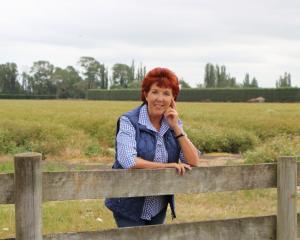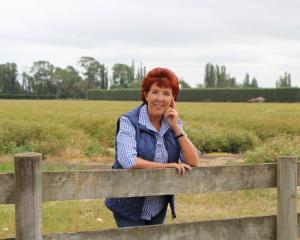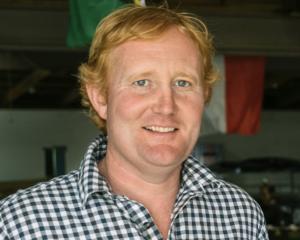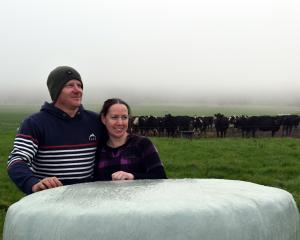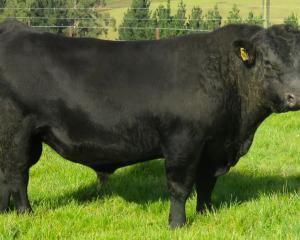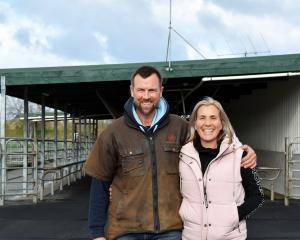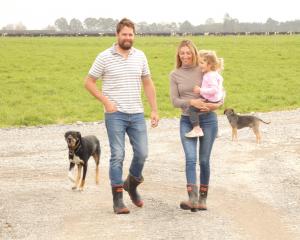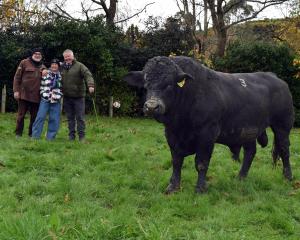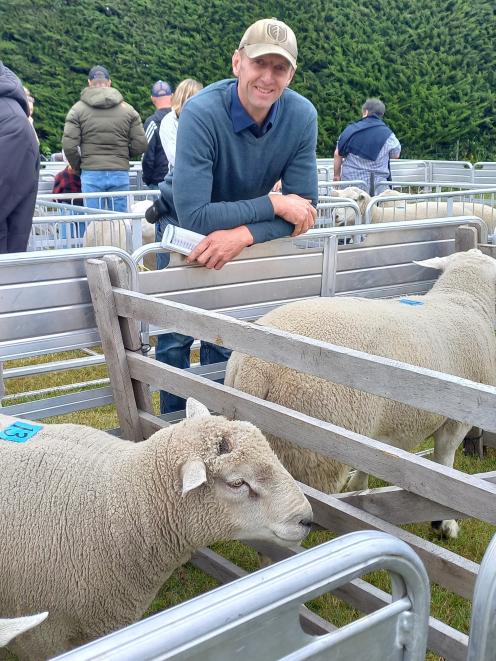
The North Otago veterinarian and sheep breeder, with his wife Abby, has launched the Rocket Ram project, combining a base of composite white terminals (Poll-tex and Charollais-Southdown) with imported White Suffolk sires from Australia.
The first helmsman auction of Cordyline Rocket Rams was held at Brookfield Park in North Otago last week and Mr Robertson was grateful for the interest and support of the new venture. The top price of $2100 was shared by three rams.
It was not an easy decision to move away from his traditional breeding heritage but he was excited about where the project would take them.
They could be generally described as big, growthy, white terminals that had good lambing ease and vigour. The aim was for the most efficient meat producing rams possible, being guided by strong data and sound stockmanship.
"We all want greater efficiency in meat production. I think these genetics will deliver that," he said.
Mr Robertson has a flock of super fine merino ewes for progeny testing terminal sires. This year’s crop of lambs were mostly sired by Rocket Rams and the lambing ease and survival had given him confidence they were a versatile terminal sire.
neXtgen Agri International chief executive Mark Ferguson congratulated Mr Robertson and his family for initiating the Rocket Ram project, saying it took courage to leave "the well-worn path" of established breeds and the comfort of fitting in.
The innovative approach being taken by Mr Robertson and other neXtgen clients to reimagine the New Zealand terminal ram was exactly what the industry needed, he said.
Every business must focus on its profit drivers; in farming, those were the cost of production, the amount of product out the gate and the price received for that product.
When it came to terminal rams, ease of lambing and rapid growth were the big ticket profit drivers, especially over fine-wool or maiden ewes. Stuck lambs and dead ewes could rapidly eat away at potential profits and explosive growth got the lambs out the gate on earlier dates and at heavier weights.
The need to take cost out of sheep businesses through selection was highlighted during times such as what was being experienced in the industry at the moment, he said.
Through his work in both New Zealand and Australia, Dr Ferguson was seeing it was "game on" with shedding sheep as some people had reached the threshold of not wanting to pay for shearers.
Often seen initially on hobby farms, the mindset was shifting to big flocks including the likes of Lambpro in Australia which supplied genetics for about one million lambs annually.
Another big shift had been triple drench resistance which hit at pace and sharpened a lot of people’s focus on the need for selecting for worm resistance.
Dr Ferguson said there was no place for traditional breeds with a traditional mindset. Those who were not embracing welfare or costs traits, irrespective of what breed they had, were going to get left behind. A breed would only fail if it lost enough critical mass.
There was definitely a shift being seen in the industry to people wanting to control their destiny and the time for complacency and lethargy in breeding was gone, he said.
The last few years were "a bit more comfortable" but now it was very uncomfortable and there was no doubt there would be people hurting. Everyone was looking at their budgets and making cuts. The risk might be that they bought cheap rams but, by cutting costs this year, it might add to their costs next year.
But describing himself as an eternal optimist, Dr Ferguson said it was also an exciting time and the opportunities for the sector were "massive".
The fundamentals were "amazing" for the industry’s product but the cost had to be taken out of the system and profitability maximised, along with focusing on market suitability.
Dr Ferguson said his own business was not immune to what was happening and it was becoming increasingly Australian focused which was not by choice, but where the demand was as New Zealanders were less likely to pay for consultants.
"I think people need help making the most of their genetics. There’s lots of other things for them to think about, we don’t have to think about anything else," he said.




